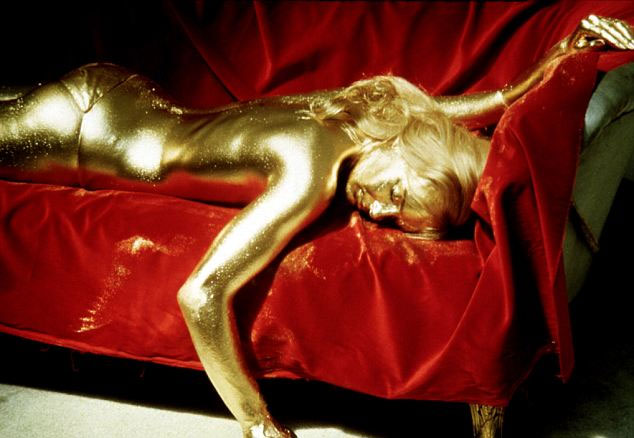Golden hair dyeing technology
Almost from the beginning of human civilization, gold has become a symbol of power and honor. Many people who want to promote their status deliberately display gold jewelry, weapons and even teeth.
Recently, for the first time, scientists have found a way to use one of the most valuable metals to dye human hair, promising to give precious metal lovers a pure gold hair. .
And perhaps the most interesting thing for those who like to dance is their golden hair that will sparkle red under the infrared light of the dance floor.

Scientists have developed the technique
dye hair with gold nanoparticles. (Photo: Daily Mail)
However, it should be noted that this process of hair dyeing is not as simple as conventional dyeing. First of all, your hair needs to be bleached, then it takes up to 7 hours to dye before you get the first golden light. To get red fluorescence throughout each lock, it will take more than 2 weeks.
The problem is still not over, the dyeing process requires strong chloroauric acid, has a pH value of 12.5, which is much more caustic than classic hair alkali, which uses thioglycolate ammonium with PH = 9 or 10.
However, even though you will have to pay a hairdresser a sizable amount of money for the long and elaborate hair dyeing and care needed to do it, the dye is relatively cheap because of the amount of gold. used very small.
Chemical & Engineering News page quoted Phillipe Walter from University of Pierre and Marie Curie (France), said the process of hair dyeing as above only needs to use gold equal to 0.4 - 0.5% of the weight of the hair. That means, you only have to spend an average of 100g gold (about $ 30) to get a pure blonde hair. Dr. Walter, who led the study, further explained that the phenomenon of yellow hair dyeing in red fluorescence is the result of gold nanoparticles interacting with hair fibers.
This is not the first time researchers have found a way to use yarn dyed gold. Last year, a group of scientists in New Zealand claimed to have used gold-dyed wool nanoparticles. For this test, the authors had to prepare the gold nanoparticles first and attach them to the wool. Meanwhile, according to Dr. Walter, his team's direction is newer by finding a way to make gold nanoparticles form right on hair strands.
- 47-year-old teacher died after 10 days of dyeing her hair
- What are the dangerous diseases of hair dyeing?
- Hair dyeing is often prone to many diseases
- The cure for silver hair does not require dyeing
- Hair dyeing may increase the risk of breast cancer
- New brown leather dyeing technology
- 50 The incredible truth about hair
- Why silver hair back?
- Hair dye does not use chemicals
- Awarding the 'Golden Globe' award for good science youth
- 10 individuals received the 2013 Golden Globe Award
- Applying automotive technology to shampoo
 'Fine laughs' - Scary and painful torture in ancient times
'Fine laughs' - Scary and painful torture in ancient times The sequence of numbers 142857 of the Egyptian pyramids is known as the strangest number in the world - Why?
The sequence of numbers 142857 of the Egyptian pyramids is known as the strangest number in the world - Why? History of the iron
History of the iron What is alum?
What is alum?